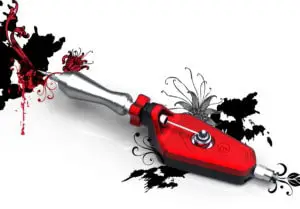4 Different Types Of Tattoo Machines & Their Uses
Even if you are yet to learn the ABC of tattooing, you must have seen numerous tattoos already. All of them vary in looks, designs, colors, and whatnot. What about the devices that artists use to make them? Do they vary? Are there not different types of tattoo machines as well?
There are primarily two types of tattoo machines – coil and rotary. They also have other types under their category, depending on what purpose you have for using them.
In today’s discussion, you will get all the information describing the tattoo machine types. It will also introduce their subcategories to you. Every beginner will love gathering knowledge about them. And for professionals, it will be an insightful discussion to decide whether or not they need to upgrade their gear.
Let’s begin!
Read More: Components And Functions of Tattoo Machines
Two Primary Types of Tattoo Machines
1. Coil Tattoo Machines
Coil tattoo machines are the first ones to mechanize the job of tattoo artists. Its development took place from the self-writing pen of Thomas Edison. In 1891, Samuel O’Reilly patented it.
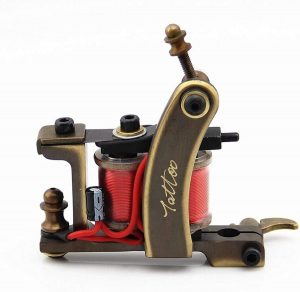
Elements Of Coil Machines
- Frame: It acts as the skeleton of the device, which holds the functioning parts of the device. Although the frame materials vary from one model design to another, they are non-ferrous alloys or steel most of the time.
- Coils: They are two electromagnets featuring a core of steel. They operate the mechanism. The devices have 8, 10, 12, 14, or even 16-wrapped coils. The higher the number, the more powerful the electromagnets. But that wraps also make the machine heavier. 10- and 12-wrapped coils are the most popular ones.
- Capacitor: It is an electronic component. Its function is to eliminate sparks during the opening or closing of an electrical circuit.
- Armature Bar: The magnetic element is mounted on the spring in the device. It operates the teetering movements to get the machine working. The spring ejects it under the electromagnets’ action and returns it with its force.
- Springs: There is a pair of metal plates, one of which carries the bar inward of the frame. The other one, affixed to the bar, acts as the contact.
- Contact Screw: It is a silver or copper screw. Coupled with another spring, it makes a pair of contacts. They clamp and unclamp, which creates the motion of striking. The screw regulates the piercing frequency and the needle’s depth.
What Are The Types Of Coil Machines?
Different types of tattoo machines have their sub-types too. Under the category of coil devices, there are liners and shaders.
Liners
The liner injects the ink fast for giving it no time to leak out. Its frequency ranges from 120 Hz to 150 Hz. A higher speed enables a liner to make sharp lines with color separations. It is not heavy and has a firm contact spring. The distance from an armature bar to spring is 4 to 5 mm. A tattoo artist cannot use it for packing colors.
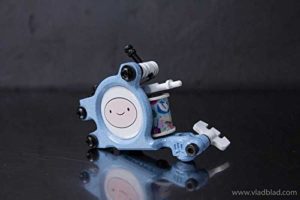
Shaders
A shader fills big areas and creates shadows. It has some differences with a liner. For example, it has more wraps. Its speed is less high, and its contact spring is less soft than those of a liner. Its frequency falls in the range of 60 to 100 Hz.
The needle remains in your skin longer. That way, the ink gets the time to roll out in your skin tissues. The armature bar is 9-10 mm away from the spring. You cannot outline a tattoo by using the shader coil machines.
What Are The Characteristics Of Coil Machines?
Coil machines are efficient at creating complicated tattoo designs. Their output is neat and refined. They can comply with larger needle groupings, which allow you to delve into different design types, especially if you are a professional artist.
Although the machines are not easy to use for all artists, you can make modifications as per your preferences after establishing some control over them. However, getting the grip of the device is the challenging part due to its complex mechanism. Besides, they are high maintenance. But all in all, professional tattoo artists have been admiring coil machines because of their versatile functions and capability to execute different types and styles of tattoos.
2. Rotary Tattoo Machines
The rotary tattoo machines were developed first in 2010 when technology made it feasible to build tiny and mighty electric motors. The mechanism is quite similar to that of sewing machines. There is an eccentric affixed to the shaft of the motor. It converts the rotor’s rotation into the needle’s reciprocation motion.
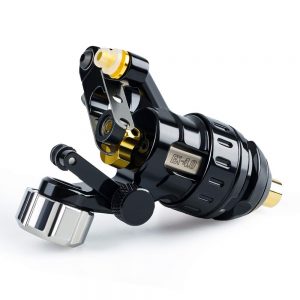
Elements Of Rotary Machines
- Frame: It is the supporting structure of the device. Aluminum alloys or other sustainable hard polymers are its materials.
- Electric Motor: It is the power mechanism.
- Eccentric: That works as a bearing with an armature bar.
- A Design Component: It eliminates the transverse movement of the needle. The eccentric creates transverse and longitudinal motions simultaneously. Companies remove it by using rubber bands, strings, spring-loaded levers, slide rails, and a longitudinal component with some transverse grooves.
What Are The Types Of Rotary Machines?
Manufacturers make different types of tattoo machines under the genre of rotary. They vary from each other because of the way they transmit their reciprocating motions.
Direct Drive
It transmits the force directly to the cartridge or needle. The motor rotation keeps the needle moving in nonstop oscillation. The rod of the needle is locked with the rubber bands to dampen the needle’s oscillating movements. How much time it takes for acceleration and deceleration depends a lot on the power unit quality.
Slider
It transmits the motion by transferring a longitudinal element. It is not highly sensitive to a power supply’s power level.
Commutatorless
The machine does not have a motor with a commutator. It usually weighs less than the other types. Its speed goes as high as 1500 rpm. It is expensive.
Pen
This one is a pen device with an ergonomic design. It is the latest development of rotary machines. Cheyenne, the German tattoo equipment supplier company, became the first to introduce it. It is compatible with disposable needles and modules.
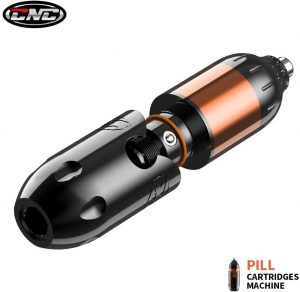
The machine uses a complex mechanism to transmit its longitudinal motion. It has compatibility with cartridges only. Maintaining and repairing this device is costly. But it is lightweight and user-friendly, which are its best features.
What Are The Characteristics Of Rotary Machines?
As I told you earlier, the machine is the easiest to use. Any user with any expertise level will find it convenient. Plus, it is not high maintenance at all. It also causes lesser skin problems. Its color packing is consistent and swift.
It provides the best output when used with small needle groupings. It is lightweight and quiet. As a result, the user can get the hang of it in no time and will not be distracted by any buzzing sound.
Contrarily, it often creates stitched lines by accident because of running so fast. While the colors are remarkable, the lines and shades are less satisfactory. In addition to that, they are not as responsive to your skin as coils.
Additional Read: Coil Vs. Rotary Tattoo machine
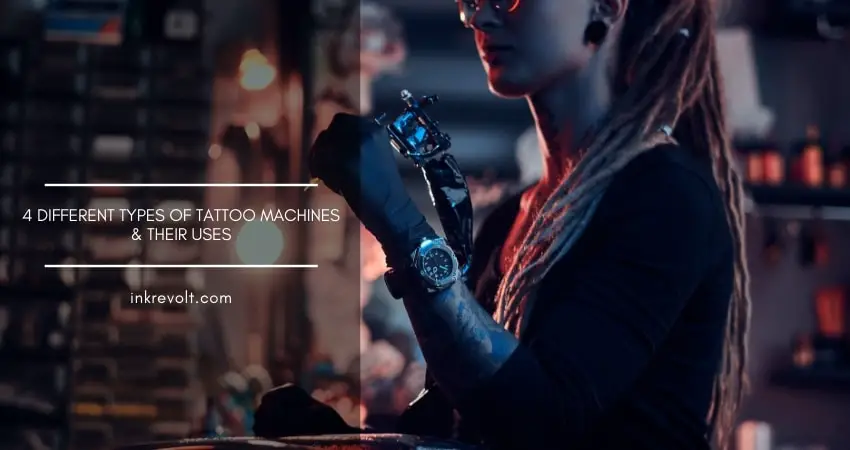
Are There Other Different Types Of Tattoo Machines?
Other than coils and rotaries, you will also find hybrid and pneumatic tattoo machines. I am giving you a brief intro of them below.
1. Pneumatic Tattoo Machines
Unlike rotary and coil machines, a pneumatic machine powers its needles with its air compressor. It was launched in the market to make a revolution for clients and tattoo artists to experience the process of tattooing.
It is lightweight, hygienic, and manageable. You can easily place it in an autoclave for sterilization. It is the most popular device after the other two. However, it has other limitations for which artists rarely use it anymore.
2. Hybrid Tattoo Machines
It is the combination of a coil and a rotary machine. It has the bit and hit of coil machines while performing consistently and reliably like a rotary.
You can adjust it to do any tattoo work, but it is a little tricky because of its exceptional liner, particularly when it comes to larger groupings.
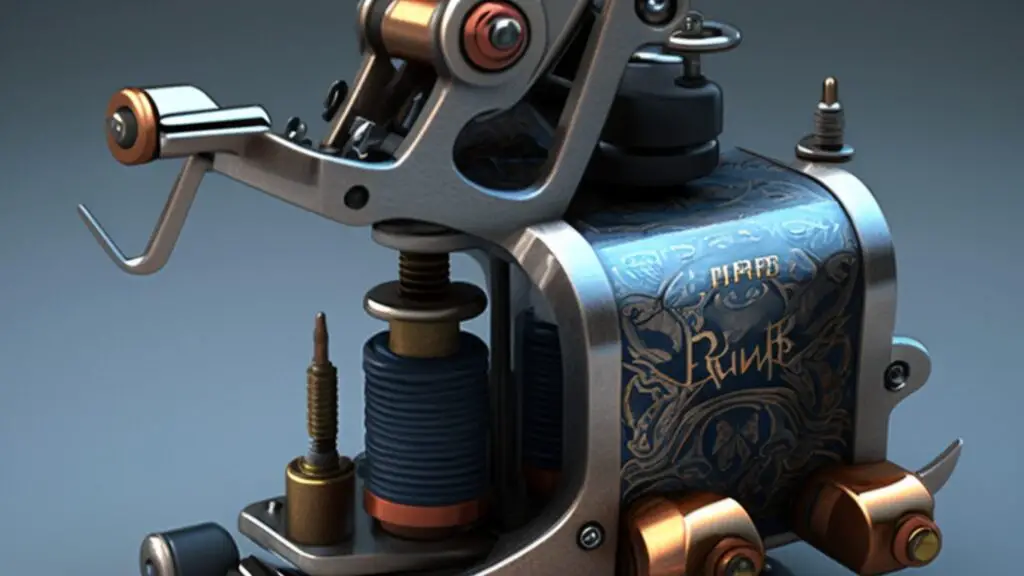
Even though a hybrid device has similar aesthetics to a conventional coil machine, it is smaller, quieter, and lighter like a rotary. You have to use it with needles, not cartridges.
Frequently Asked Questions
Are Coil Devices Better Than Rotaries?
Neither better nor worse. You cannot rule one of them out by weighing up the other’s characteristics. They both have their pros and cons. The choice is up to your requirements. Beginners should try them both and select the one they find more comfortable.
What Are The Types Of The Frames Of Tattoo Machines?
There are many types of frames. Some are of oxidized and anodized steel, whereas others are of aluminum alloys and bronze. They can either be solid or assembled. The solid ones, again, can be either milled or one-piece.
What Types Of Tattoo Machines Do Professional Tattoo Artists Use?
There is nothing fixed about that. Professional tattoo artists use different types of tattoo machines altogether. For example, one may have a pair of coil machines to make lines and shades. Another may have a couple of rotaries to pack colors.
Artists who often travel can bear a lightweight, wireless, and battery-powered tattoo machine.
While selecting a tattoo device, the moments you will find decisive are mostly the equipment, individual sensations, and technical characteristics. Anyone devoting themselves to tattooing should remember their and their clients’ comfort first. These situations have a deep connection with one another.
What is a cartridge needle system?
A cartridge needle system is a newer type of tattoo needle that is designed to be easily interchangeable, making it faster and more convenient for tattoo artists to switch between needle sizes and configurations.
Can I use different needle sizes with the same tattoo machine?
Yes, different needle sizes can be used with the same tattoo machine by changing the needle and adjusting the machine’s settings.
Can I use a different power supply with my tattoo machine?
Yes, as long as the power supply is compatible with your tattoo machine, you can use a different power supply. However, it is important to choose a power supply that is designed specifically for tattooing and to follow the manufacturer’s instructions for use.
What are some common problems with tattoo machines?
Some common problems with tattoo machines include needle breakage, motor failure, and misalignment of parts. Regular maintenance and proper use can help prevent these issues.
How do I troubleshoot my tattoo machine?
If you are experiencing problems with your tattoo machine, try cleaning and lubricating it first. If the problem persists, consult the manufacturer’s instructions or a professional tattoo artist for further assistance.
Final Words
It is always important to know about the relevant and basic stuff when you are into something. And that could not be truer for tattooing.
If you are a beginner, it is paramount that you learn about tattoo machines and what they do before you start. As you grow into a more skilled tattoo artist by progressing further, you will need to dig more into the field to enhance your knowledge and experience.
That time this article will help you to pick the best tattoo device for yourself. Even professionals can benefit by knowing about the machines they have yet to try.
I hope you have enjoyed learning about different types of tattoo machines! Thank you for reading.
Happy Tattooing!

